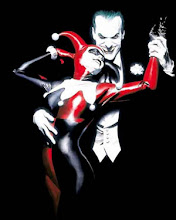Questions:
1. Turning lock: how does the hip eye align with the ball of the foot during turning lock?
Answer: The hip eye always align with the same side foot. (left with left, right with right). It's the shoulder that may cross sometimes to the opposite foot.
2. How to do the double reverse with
The routine goes as the following:
1. chasse close.
2. quick open reverse with a pivot (1 2&3&)
3. double reverse overturned(1 2&3&)
4. left whisk (123)
5. run around.
There are a lot of syncopation and turns here. In turning, need to remember the following
a. get out of the way when in inside of the turn. This is used in after the pivot step and after the double reverse. Basically overturn a bit to get to the right position, and then step the right foot toward under the right elbow to get out of the way.
b. use arm to help partner get out of the way when on outside of the turn, this is used in the last step of the quick open reverse, to prepare for the pivot step
c. She also suggested to do another reverse turn, instead of a pivot after the double reverse to turn around.
d. on runaround, keep the inside hip (i.e. right keep) down. this helps with the turning. But to keep a nice picture, still project left/up on the shoulder/upper body.
3. How to do the develope picture line (Need to ask her on this again when Charles is around)
a. Look up/forward, not down.
b. bend left knee before stepping back.
c. there are two choices on the shaping here, which leads to either keep the lady's head left, or turn it right. Not really sure how she lead these two.
d. slight left foot forward before getting onto left foot.
d. move the weight forward to left foot, and pick up right knee.
e. extend right foot, and do both foot rise and body rise. (do foot rise if possible, can skip it if need it for balance)
f. on coming out of this figure, the first right step is around leader's left side, then the next step is around his right side. there are similarity to this in fall away whisk.
e. She also mentioned that this is a definitely a waltz picture line, with the rise and fall. And most of the picture line should be phrased on the first bar 123 in the 8 bar phrase.
4. We then worked on foxtrot a little bit.
1. Turning lock: how does the hip eye align with the ball of the foot during turning lock?
Answer: The hip eye always align with the same side foot. (left with left, right with right). It's the shoulder that may cross sometimes to the opposite foot.
2. How to do the double reverse with
The routine goes as the following:
1. chasse close.
2. quick open reverse with a pivot (1 2&3&)
3. double reverse overturned(1 2&3&)
4. left whisk (123)
5. run around.
There are a lot of syncopation and turns here. In turning, need to remember the following
a. get out of the way when in inside of the turn. This is used in after the pivot step and after the double reverse. Basically overturn a bit to get to the right position, and then step the right foot toward under the right elbow to get out of the way.
b. use arm to help partner get out of the way when on outside of the turn, this is used in the last step of the quick open reverse, to prepare for the pivot step
c. She also suggested to do another reverse turn, instead of a pivot after the double reverse to turn around.
d. on runaround, keep the inside hip (i.e. right keep) down. this helps with the turning. But to keep a nice picture, still project left/up on the shoulder/upper body.
3. How to do the develope picture line (Need to ask her on this again when Charles is around)
a. Look up/forward, not down.
b. bend left knee before stepping back.
c. there are two choices on the shaping here, which leads to either keep the lady's head left, or turn it right. Not really sure how she lead these two.
d. slight left foot forward before getting onto left foot.
d. move the weight forward to left foot, and pick up right knee.
e. extend right foot, and do both foot rise and body rise. (do foot rise if possible, can skip it if need it for balance)
f. on coming out of this figure, the first right step is around leader's left side, then the next step is around his right side. there are similarity to this in fall away whisk.
e. She also mentioned that this is a definitely a waltz picture line, with the rise and fall. And most of the picture line should be phrased on the first bar 123 in the 8 bar phrase.
4. We then worked on foxtrot a little bit.
